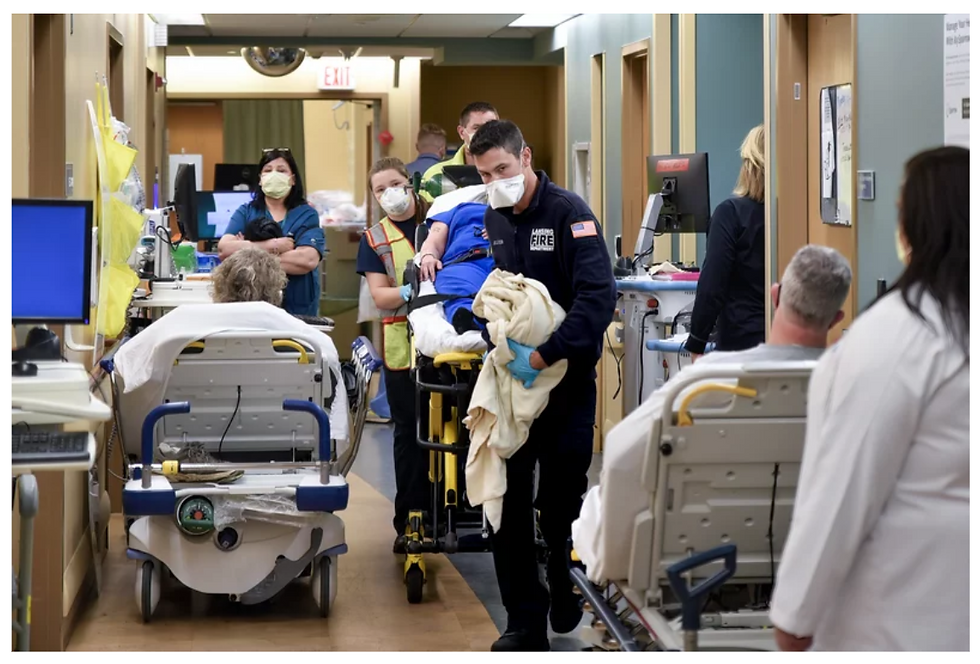What's To Come In 2017 For Home Wound Care
- Joe Ebberwein

- Dec 29, 2016
- 3 min read
Updated: Mar 30, 2021

As 2016 draws to a close, we look towards the future of home wound care. Just this month, Centers for Medicare and Medicaid Services (CMS) published the Medicare Home Health (HH) Prospective Payment System (PPS): Case-Mix Methodology Refinements technical report, including an overview of the Home Health Groupings Model (HHGM). This technical report describes efforts to reassess the current HH PPS and develop large-scale payment methodology changes.
In the CY 2017 final rule, CMS implements the fourth and final year of the four year phase-in of the rebasing adjustments to the HH PPS payment rates as required by the Affordable Care Act. In addition, CMS will decrease the national, standardized 60-day episode payment amount by 0.97 percent in CY 2017 to account for nominal case-mix growth between CY 2012 and CY 2014.
The Improving Medicare Post-Acute Care Transformation Act (IMPACT), passed in the fall of 2014, requires home health agencies, skilled nursing facilities, long-term acute care hospitals, and inpatient rehabilitation facilities to submit standardized data, including quality measures, resource use, and other measures. This is part of the CMS’s push for overall quality as it moves from voluntary reporting of quality measures to mandatory reporting to basing reimbursement on the data reported.
OASIS-C2, scheduled for implementation in January 1, 2017, is a modification to the OASIS that Home Health Agencies must collect in order to participate in the Medicare program (Centers for Medicare & Medicaid Services [CMS], 2015a). The new version of OASIS-C2 includes modifications to the integumentary status item set.
These are just a few of the changes affecting home health agencies in 2017 and beyond. Agencies continue to balance the fact that they have a pivotal role as a preferred provider for post-acute, value-based care with continued CMS payment cuts and scrutiny by MedPAC and the Office of the Inspector General (OIG). In the midst of all these changes, there are a number of wound-related items for your agency to consider in 2017. In addition to significant changes to the OASIS C2, you must also look out for Negative Pressure Wound Therapy (NPWT) and the use of disposable NPWT units.
As required by the Consolidated Appropriations Act, 2016, CMS is implementing a separate payment for furnishing Negative Pressure Wound Therapy (NPWT) using a disposable device for patients under a home health plan of care.
In the past, the service related to application and maintenance of negative wound pressure therapy has been covered under the home health benefit. The equipment used to perform the service was classified either as DME (durable medical equipment) and paid for either separately or the disposable negative pressure wound device. It could also be paid for as part of the list of non-routine medical supplies and covered under the HH PPS episodic rate.
However, effective January 1, 2017, CMS is changing the way negative pressure wound therapy utilizing a disposable device will be billed. The coverage of both the service and the device will be shifting from the HH PPS to the Medicare Hospital Outpatient Prospective Payment System (OPPS).
How can Corstrata help your home health agency maneuver these critical changes?
Corstrata utilizes mobile technologies to create access to its board-certified wound care specialists to produce a return on investment for our customers. Corstrata assists providers in proper assessment of wounds during the completion of the OASIS C2. Additionally, we collaborate with providers to develop a wound program that includes evidence based, best practice wound treatments, staff education, pressure ulcer prevention program, and wound formulary redesign. Corstrata provides wound image and video consults that include accurate identification of the wound type and associated staging, precise wound measurement, and recommended treatment and wound dressing.
Contact us today for Expert Wound Care. Anywhere.




Comments